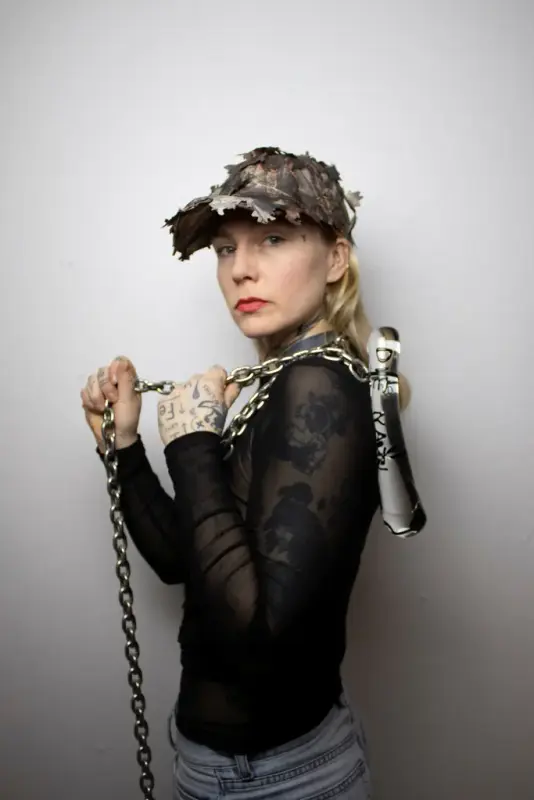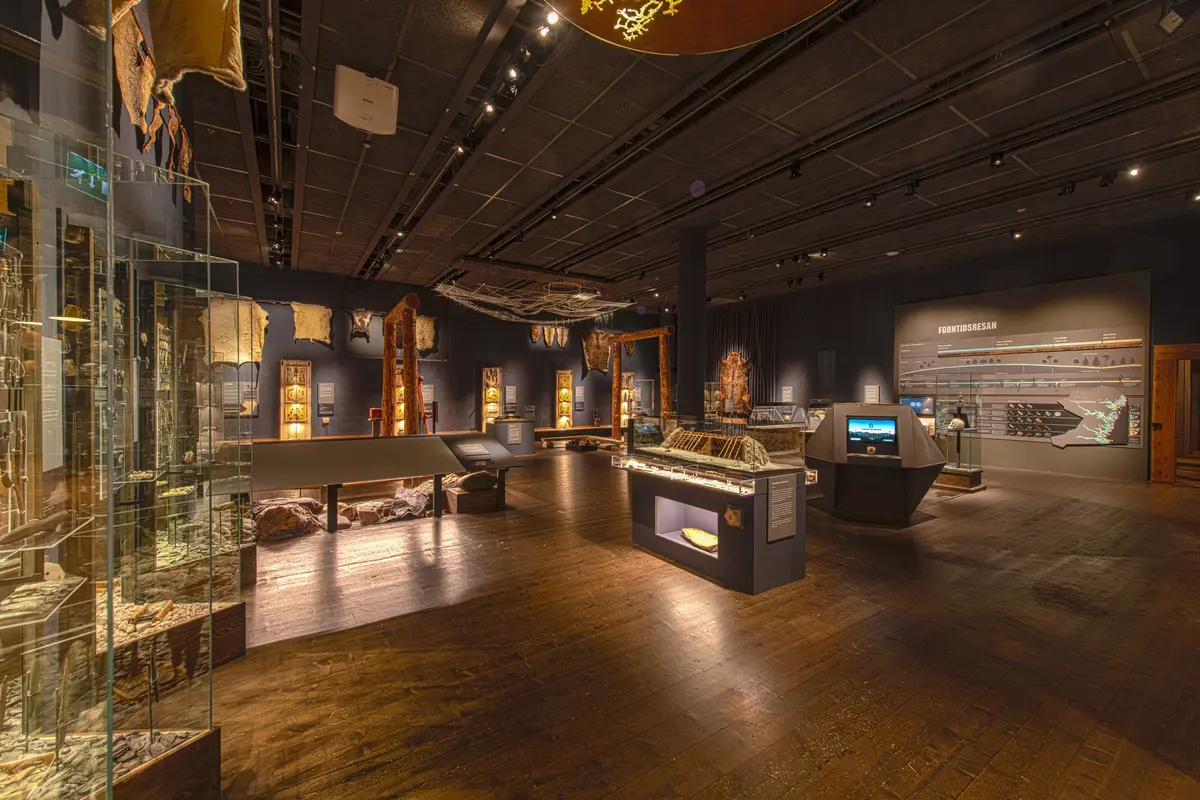Kommande utställningar
Här kan du läsa om vilka utställningar som kommer.

BÄRSÄRK: BENGT LINDSTRÖM
18 oktober 2025 - 15 mars 2026
Vissa älskar honom passionerat medan andra sedan länge upplevt en viss leda—en trötthet inför de kraftfulla figurer och explosiva färger som var hans signum. Flertalet utställningar har genomförts i Västernorrland genom åren, och under en tid på 1990-talet fanns en konsthall i länet med hans verk ständigt installerade. Han satte också bokstavligen sitt märke på vårt landskap: en färgglad betongskulptur i en form som påminner om en slangbella reser sig invid E4:an i Timrå. Drygt trettio meter hög sträcker den upp sina armar i blått, rött, gult och grönt – ett konstnärligt manifest som är svårt att missa. Detta gigantiska Y har, om inte annat, gjort honom känd för den breda massan i vår region.
I år hade Bengt Lindström fyllt 100, och avsikten är att denna jubileumsutställning ska erbjuda publiken nya perspektiv och en chans att återupptäcka den vildsinta energi som en gång gjorde Lindströms konst så omvälvande - att med fräscha ögon uppskatta den envetenhet och kraftfullhet som å ena sidan gjorde honom till paria i det översta lagret av konsteliten, men samtidigt så välbekant och populär bland den breda publiken i hans hemtrakter.
Det var med kompromisslös kraft och orubblig vilja som Bengt Lindström efter år av motgångar i Paris konstliv till slut slog igenom på 1960-talet för att bli en av Sveriges kommersiellt sett mest framgångsrika konstnärer. Han hade vid genombrottet till slut hittat sin stil, och hans manér var omedelbart igenkännbar—en explosion av färg och form, med motiv som ofta hade en touch av satir och som inte sällan anknöt till hans nordiska ursprung. Hans image och framtoning; atletisk, internationell, vild, äventyrlig, norrländsk karlakarl– gjorde honom till en projektionsyta för tidens ideal och begär. Han blev en konstnär vars skapelser nådde långt utanför de etablerade gallerirummen. Hans konstproduktion var enorm och han lånade också motiv till att pryda glas, keramik och frimärken. Lindström förstod kraften i sitt eget bildspråk och utnyttjade det fullt ut—en färgens bärsärk som aldrig bad om ursäkt för den plats han tog. ”Jag vill måla större! Jag vill måla fulare!”
Bärsärk: Bengt Lindström, vill ta med betraktaren i Bengt Lindströms resa från ung sökande konstnär till folkkär vilde med omisskännligt uttryck och stora uppdrag. Ett axplock ur Lindströms konstnärliga bana presenteras, med avstamp i den samling som donerats till museet via Michèle och Bengt Lindströms stiftelse för modern konst.
Utställningen invigs 18e oktober 2025 och pågår till och pågår till och med 15/3 2026.
Parallellt i stora utställningshallen visas under samma period tre utställningar med anknytning till Bengt Lindströms konstnärskap:
Erika Kristoffersson Bredberg - Vittring på Vittra (18/10-6/12 2025)
Frank Mc Carthy - Paint Punch (preliminära datum 13/12 2025 -25/1 2026)
Art Brut från Gådeå: Harald Boström (preliminära datum 7/2-15/3 2026)
Curator: Linnéa Therese Dimitriou
Teknisk Producent: Per Ahlenius
Grafisk Form: Christina Sollén
Antikvarier: Elin Lundin och Alf Rundqvist

Erika Kristofersson Bredberg - Vittring på Vittra
(18/10-6/12 2025)
Parallellt med Bärsärk: Bengt Lindström visas tre parallellutställningar som anknyter till Lindströms bana och praktik på olika sätt. Den första är Vittring på Vittra, en utställning med konstnären Erika Kristoferson Bredberg.
Kristoferson Bredberg arbetar ihärdigt med visuella element kopplade till popkulturen—från dekaler inspirerade av motiv från chicano- och tatueringsvärlden till symboler för ravekulturen, såsom smileys och psykedeliskt färgade svampar. Detta i kontrast till influenser från hennes uppväxt i en liten by utanför Bredbyn, där närheten till skogen alltid var central. Hennes praktik genomsyras av lekfullhet och humor och sträcker sig från unika, fristående skulpturer i glas till serier av verk, där experimentlustan är central. Utöver sin egen produktion driver hon en glashytta, där hon blåser både konstglas och bruksföremål på uppdrag av andra.
I likhet med Bengt Lindström utmanar Kristoferson Bredberg traditionella tekniker för att på olika sätt utforska materialens möjligheter. Båda konstnärskapen kännetecknas av intensiva färger, förvrängda former, en sorts brutalitet och en fäbless för det expressiva och till synes slumpartade. Den fysiska, kroppsliga insatsen i skapandet är också en gemensam nämnare, liksom den repetitiva processen som används för att uppnå ett överraskande och spontant uttryck.
I utställningen utforskar Erika Kristofersson Bredberg en ytterligare gemensam nämnare: intresset för folktro och mystik. Om arbetet inför utställningen berättar hon:
"Min mormor berättade när vi var till fäbodvallen hon var på som barn att de hade fått flytta alla fäbodar från där de stod först på grund av att placeringen var mitt på där vittra höll till - vilket innebar mycket elände enligt henne. Och då ska sägas att min mormor var mycket kristen. Det tycker jag är väldigt intressant hur hon ändå ville eller accepterade tanken om vittra. Jag tänker att det handlar om en slags skogsreligion. Är man ett barn av skogen så sker där mystiska ting som man inte kan negligera.”
